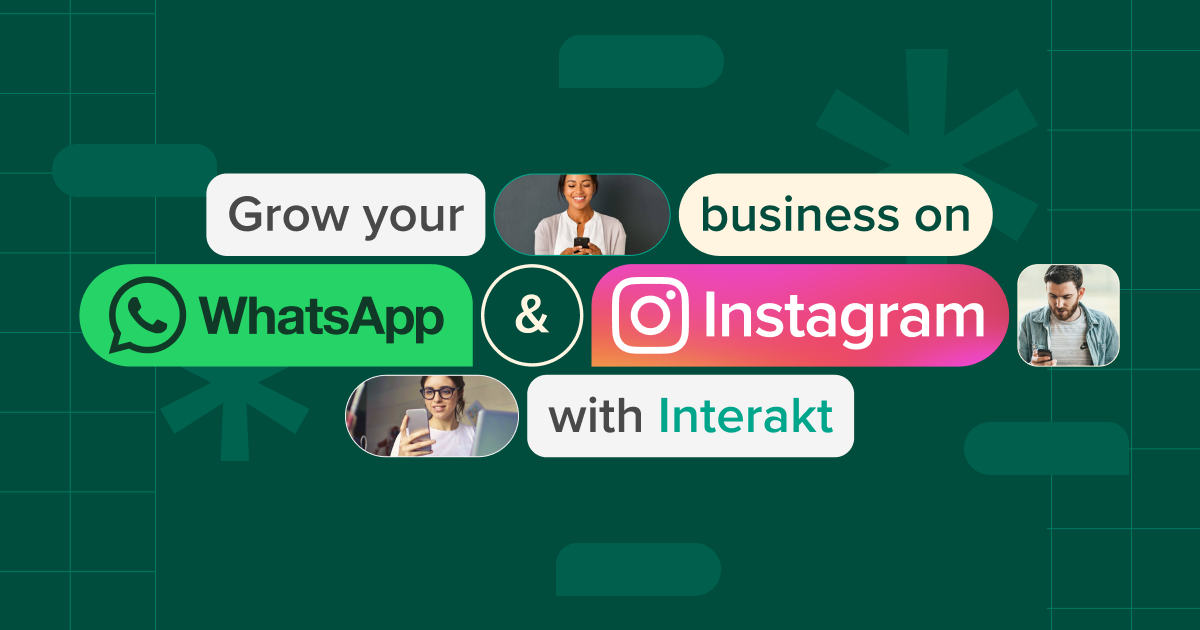WhatsApp is no longer just a personal chat app. It’s now a powerful space where businesses and customers actively interact. Quick replies, real-time updates, and easy access make it a preferred channel for both sides.
However, with more brands joining in, users are receiving way too many messages. And when every notification starts to look the same, it’s easy to tune out. Generic messages don’t just get ignored; they feel intrusive.
That’s where personalization makes all the difference. It helps your message stand out, feel relevant, and add value to the conversation.
In this blog, we’ll show you how to build personalized WhatsApp Business API messaging campaigns that engage without annoying your audience.
Understanding WhatsApp's Communication Policies
Before starting any messaging campaign, it’s essential to know the rules that keep your outreach effective and compliant.
1. Consent and opt-in requirements
You can’t message users on WhatsApp without their clear permission. Businesses must get explicit opt-ins before sending messages. This could be through a website form, SMS, app, or any other channel the user trusts. The opt-in process should clearly state what type of messages users can expect and how often they’ll receive them.
2. Message types and approved use cases
WhatsApp Business allows two core message types, each with its purpose and rules. Knowing when and how to use them is key to staying compliant and relevant.
1. Session Messages: Sent within 24 hours of a user’s last message. Ideal for ongoing chats, support, or quick follow-ups. No approval is needed, but the time window is strict.
2. Template Messages: Used to start conversations after 24 hours. These must be pre-approved by WhatsApp and are meant for essential updates like order alerts, reminders, or payment notifications. Promotional use is allowed only with prior user opt-in.
3. Handling sensitive information and privacy compliance
You must ensure that any data shared over WhatsApp respects privacy laws like GDPR or local equivalents. Sensitive information like personal details, payment data, or medical records should be handled carefully, ideally with end-to-end encryption and minimum exposure.
4. Limits on message frequency and spam prevention
WhatsApp Business API sets clear messaging limits based on your account’s tier. Depending on your quality rating and verification status, you can message up to 1,000, 10,000, or 100,000 unique users daily. These limits help maintain message quality and reduce the chances of spamming users at scale.
To maintain message quality and avoid getting flagged, follow these best practices:
1. Always get an explicit opt-in before sending messages
2. Personalize messages based on user behavior or preferences
3. Avoid sending too many messages in a short span
4. Stick to relevant, value-driven content
5. Monitor block and report rates regularly
6. Make it easy to opt-out
5. Consequences of policy violations
Violating WhatsApp’s business policies can result in restrictions, account warnings, or even permanent bans. WhatsApp maintains a quality rating for each business account, and if that rating drops due to complaints or misuse, your messaging access may be limited or suspended.
Building an Opt-In Subscriber List
Getting permission to message someone is the first and most crucial step. Here’s how to build a solid, high-intent WhatsApp subscriber list:
1. Crafting a clear value proposition: People won’t opt in just to get more messages. Tell them exactly what they’ll get, like exclusive updates, early access, support, reminders, or offers.
2. Using multiple entry points for opt-ins: Don’t rely on just one method. Add opt-in options across your website, checkout page, social media, email, or offline via QR codes. The more visible and accessible it is, the easier users can opt-in.
3. Providing transparent consent options: Make the opt-in process simple and upfront. Let users know what kind of messages they’ll receive and how often. Avoid hiding it in a lengthy terms and conditions section.
4. Offering incentives for subscribing: A one-time discount, free shipping, early access to a sale, or a helpful resource can be great motivators for users to opt in. Just make sure the reward aligns with what you’re offering via WhatsApp.
5. Ensuring easy opt-out options: Let users opt-out with a simple reply like “STOP” or a single tap. This shows you’re respectful of their space, and it encourages more people to opt in confidently.
Utilizing WhatsApp's Features for Enhanced Engagement
WhatsApp has features that can make your communication smarter, faster, and more engaging. Here’s how you can make the most of it:
Leveraging broadcast lists for mass outreach
Broadcast lists let you send one message to multiple users without creating a group. It’s great for sharing updates, announcements, or reminders while keeping chats personal. Just ensure contacts have saved your number and opted in.
Using quick replies for faster responses
Quick replies help you save and reuse common responses. Whether it’s a thank you message, product info, or a payment link, these shortcuts save time and keep communication consistent.
Incorporating rich media (images, videos, PDFs)
Sharing images, short videos, or PDFs can make your messages more informative and visually engaging. Use them to showcase products, share catalogs, or send step-by-step guides within the chat.
Setting up automated greetings and away messages
Use automated greetings to welcome new chats instantly, even during off hours. Set up away messages to let users know when you’ll respond. These messages ensure no one goes unanswered, even when you’re not available.
Utilizing labels to organize conversations
WhatsApp Business lets you add labels to conversations like “New Lead,” “Pending Payment,” or “VIP Customer.” It’s a simple way to manage follow-ups and never miss an important message.
Monitoring and Analyzing Campaign Performance
Tracking your WhatsApp campaigns’ performance helps you improve results, avoid guesswork, and deliver better customer experiences. Here’s what to focus on:
1. Tracking message delivery and read rates
Start by checking if your messages are reaching users and being read. High delivery and read rates indicate healthy engagement, while low numbers suggest issues with your opt-in list, content quality, or message timing.
2. Measuring response times and resolution rates
How quickly are you replying? How fast are issues being resolved? Tracking these helps you identify gaps in your support workflow and ensures you’re not keeping users waiting longer than necessary.
3. Analyzing click-through rates (CTRs) on links
If your messages include links, track how many users are clicking them. CTRs help you understand which messages spark interest and what type of content drives users to take action.
4. Gathering customer feedback and sentiment
Use follow-up messages, surveys, or emoji reactions to understand how users feel about your messages. This can help you fine-tune tone, content, and timing to match customer expectations better.
5. Identifying trends and optimizing future campaigns
Look at patterns over time, like what kind of messages perform best, which days get better responses, and what content gets clicks. These insights help you refine your approach and improve the performance of future campaigns.
Conclusion
Personalization isn’t just about adding the recipient’s name.
It’s about making messages feel relevant and timely, which the user wants to read. To do this effectively, you’ll need the WhatsApp Business API.
A WhatsApp API provider like Interakt helps you connect WhatsApp with your existing systems and workflows, so you can use real-time customer data like last orders, messages, or support history to send the right messages.
Ready to make your WhatsApp messaging more personal and practical? Get started with Interakt today!






